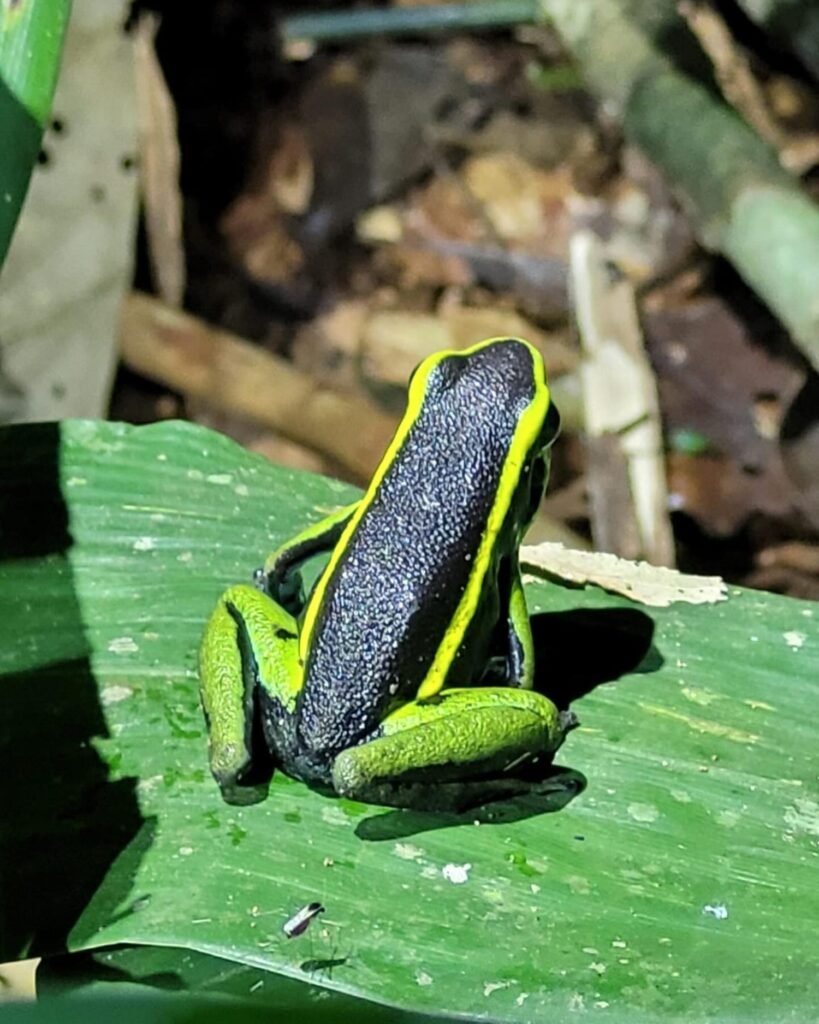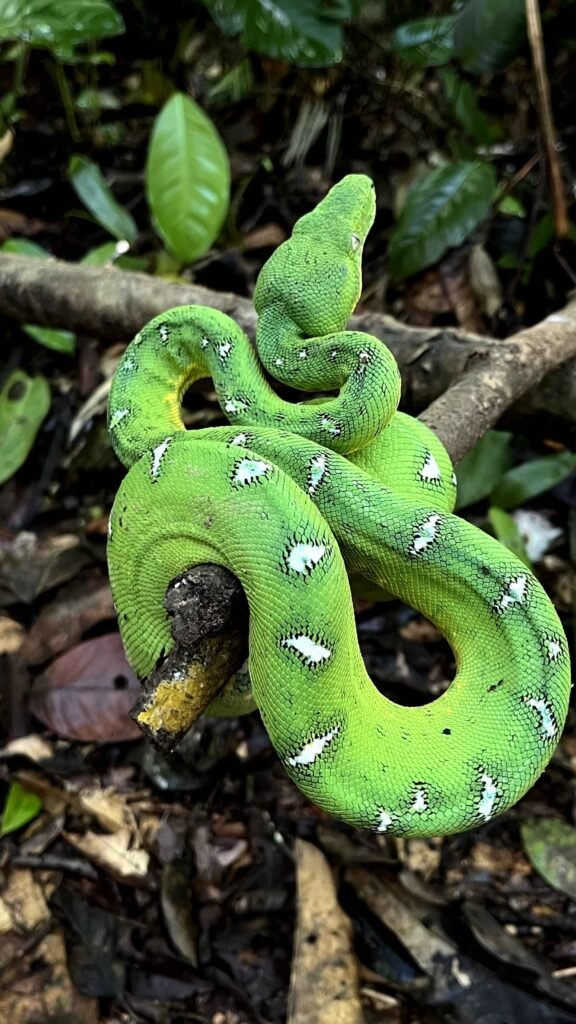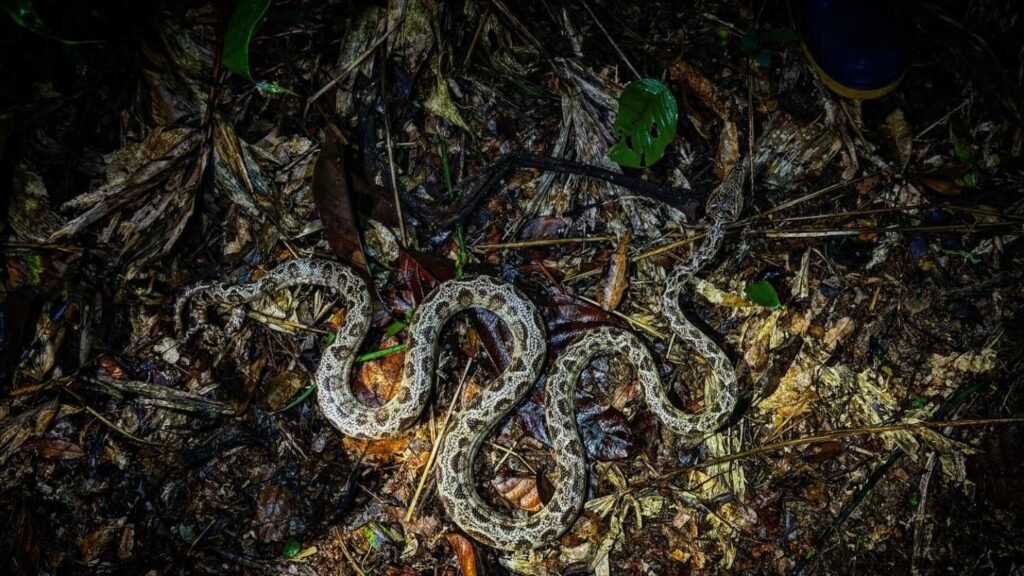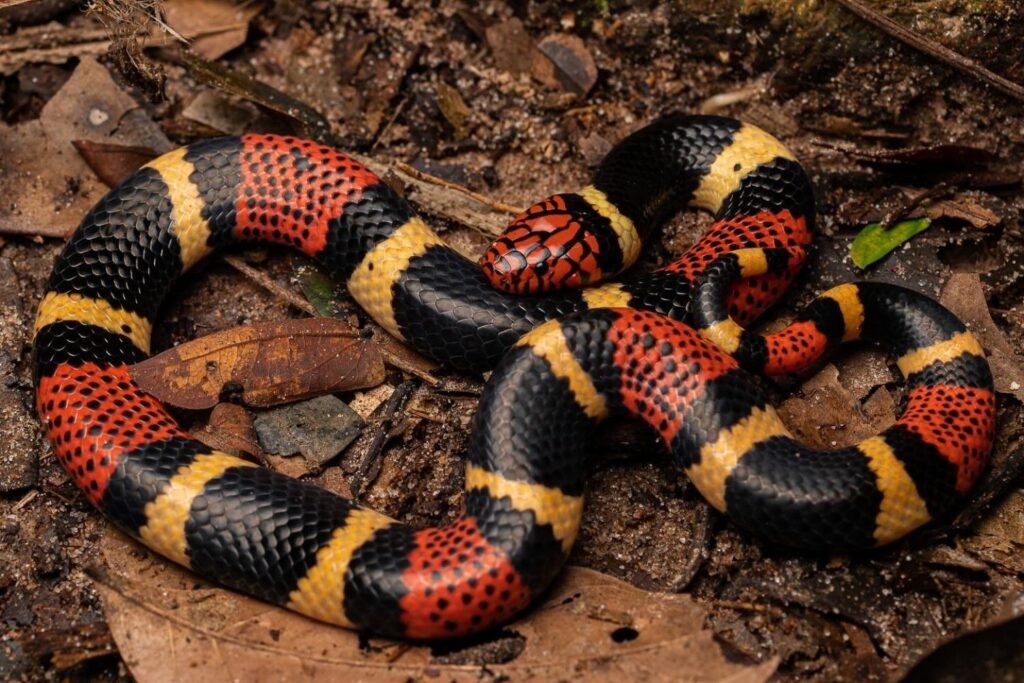Are you passionate about amphibians and reptiles? Would you like to explore one of the most biodiverse ecosystems in the world? If so, herpetotourism in Peru’s Tambopata National Reserve is an experience you can’t miss. This blog will take you on a journey through the Peruvian herpetofauna in Tambopata, revealing the incredible diversity of amphibians and reptiles that inhabit this Amazon region.
Peruvian Herpetofauna in Tambopata
What is Herpetofauna?
Herpetofauna refers to the group of reptiles and amphibians that inhabit a region. In Peru, especially in the Amazon, the herpetofauna is extremely diverse and fascinating. It includes a wide variety of frogs, toads, lizards, snakes, and turtles, each with unique characteristics and amazing adaptations.

Diversity of Herpetofauna in the Tambopata National Reserve
The Tambopata National Reserve, located in the Madre de Dios region, is a true paradise for nature lovers. At the Kawsay Biological Station, the presence of 57 species of herpetofauna, including 29 amphibians and 28 reptiles, has been documented. This rich biodiversity makes Tambopata an ideal destination for herpetotourism.
Amphibians of Tambopata
Among the most prominent amphibians in Tambopata are species such as the Rhinella marina (giant toad) and the Ceratophrys cornuta (horned frog). These species are not only fascinating for their appearance, but also for their unique behaviors and ecological adaptations.
Reptiles of Tambopata
Tambopata is home to an impressive variety of reptiles. From the majestic Corallus hortulanus (tree boa) to the intriguing Lachesis muta (bushmaster), these reptiles offer a unique insight into the diversity and complexity of Amazonian ecosystems.

Exploring the Herpetofauna: Herpetotourism in Tambopata
What is Herpetotourism?
Herpetotourism is a form of ecotourism focused on the observation and study of amphibians and reptiles in their natural habitat. This type of tourism not only offers an educational and exciting experience, but also contributes to the conservation of these species and their ecosystems.
Where Is Peruvian Herpetofauna Found?
The Peruvian Amazon, and in particular the Tambopata National Reserve, is one of the best places in the world to observe herpetofauna. The Kawsay Biological Station, in Tambopata, is an ideal starting point to explore this biodiversity, thanks to its varied habitats and well-maintained trails that facilitate the sighting of species.
What animals live in Tambopata?
In addition to amphibians and reptiles, Tambopata is home to an astonishing diversity of wildlife, including mammals, birds, and insects. The coexistence of these species creates a vibrant and complex ecosystem that is fascinating to explore.

Frequently Asked Questions about Herpetofauna and Herpetotourism in Tambopata
What is Herpetofauna?
Herpetofauna refers to the reptiles and amphibians that inhabit a given region. In Tambopata, this includes frogs, toads, lizards, snakes, and turtles.
What Animals Are Part of the Herpetofauna?
The herpetofauna includes a variety of amphibians such as frogs and toads, and reptiles such as lizards, snakes, and turtles. Each of these groups has multiple species with diverse adaptations.
Where Is Peruvian Herpetofauna Found?
The greatest diversity of herpetofauna in Peru is found in the Amazon, particularly in regions such as Madre de Dios and the Tambopata National Reserve.
What animals live in Tambopata?
In Tambopata, you can find species such as the tree boa (Corallus hortulanus), the bushmaster (Lachesis muta), and the horned frog (Ceratophrys cornuta), among many others.
How Can I Identify Tambopata Reptiles and Amphibians?
To identify species, the use of field guides and careful observation of features such as color, body shape, and behavior patterns are recommended.
What should I bring to Tambopata?
It is essential to bring appropriate clothing for the jungle, insect repellent and a flashlight for night excursions. Also, bring photographic equipment if you want to capture images of the herpetofauna.
What is the Difference Between Reptiles and Amphibians?
The main difference is that amphibians generally have an aquatic life phase and permeable skin. Reptiles, on the other hand, have dry, scaly skin and do not go through an obligatory aquatic phase.
What Tips Should I Follow to Photograph Herpetofauna?
To photograph herpetofauna, it is important to move slowly and carefully so as not to frighten the animals. Using macro lenses can help you capture details, and night photography can reveal unique behaviors.

The Peruvian herpetofauna in Tambopata offers a unique and educational experience for all nature enthusiasts. From the diversity of species to the exciting viewing opportunities, Tambopata is the perfect destination for herpetotourism.
Don’t miss the opportunity to explore the fascinating herpetofauna of Tambopata! Book your herpetofauna tour with “Lorenzo Expeditions” and live an unforgettable adventure in one of the richest and most diverse ecosystems on the planet.





